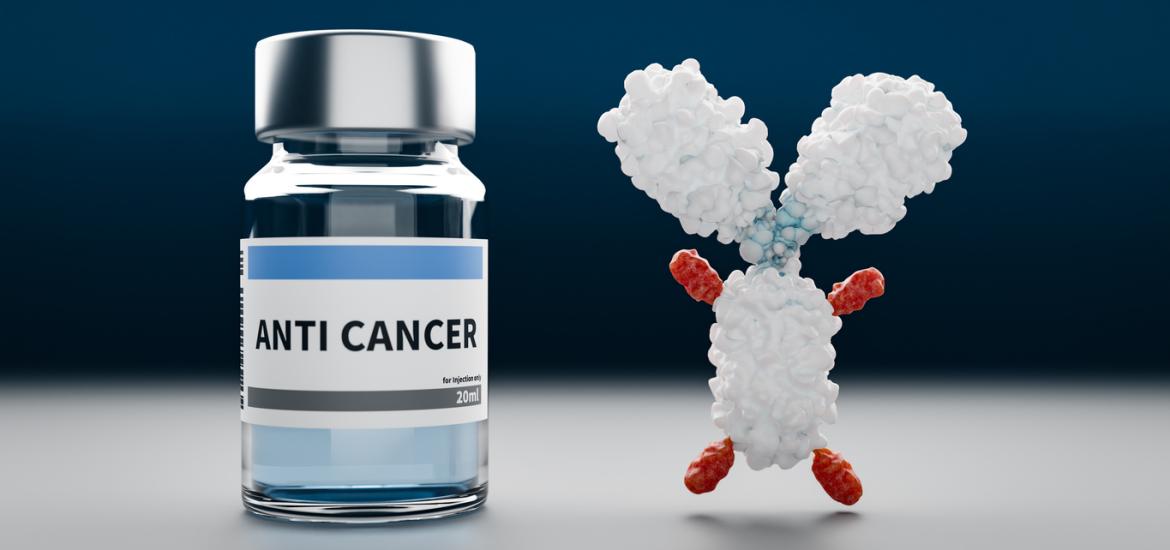
Yet more conjugates enter the clinic
Recent phase 1 entrants include a ROR1 ADC and a mystery Kelun project.
Recent phase 1 entrants include a ROR1 ADC and a mystery Kelun project.

With evident ongoing enthusiasm for ROR1 blockade among some companies' business development departments, this field recently saw a new entrant into human studies: Immunome's ADC IM-1021 started a phase 1 trial this month, according to the latest listings on clinicaltrials.gov.
The molecule was originated by Zentalis, a biotech whose valuation has drifted down amid its continued focus on the troubled area of Wee1 inhibition, and Immunome's bid to become an ADC player is notable for the company being run by Clay Siegall, the former chief exec of Seagen. Another ADC, this one originated by Kelun, is also in focus through going into human studies for the first time, but its target is undisclosed.
Kelun is the source of several ADCs licensed to Merck & Co, including sacituzumab tirumotecan. But it has wholly owned projects too, most notably the PTK7-targeting ADC SKB518, earmarked as a “key product” in its pipeline, and the anti-B7-H3 asset SKB500, which started phase 1 last December.
Now these are being joined by SKB445, due to enter phase 1 on 28 February. Nothing in the clinicaltrials.gov entry suggests what SKB445's target might be; the same is true for another first-in-human entrant, Qilu's QLS1304.
Immunome
IM-1021 has been in focus since the Immunome/Zentalis deal was struck a year ago, though it will be noted that this involved a relatively low up-front fee of just $35m.
Nevertheless, it is Immunome's most advanced ADC (the small-molecule gamma secretase inhibitor varegacestat is in phase 3), and the private group's pipeline includes three other named ADCs whose targets are so far undisclosed. The latest ROR1 ADC deal, struck days ago, featured CSPC's SYS6005 being licensed to Radiance Biopharma – another private biotech linked to Seagen.
Recently disclosed first-in-human studies*
| Project | Mechanism | Company | Trial | Scheduled start |
|---|---|---|---|---|
| IPN01195 | Undisclosed | Ipsen | Solid tumours with MAP kinase alterations | 11 Feb 2025 |
| FS-8002 | Undisclosed bispecific MAb | Fusion Bioscience | Solid tumours (excludes prior TGF-β inhibitor therapy) | 13 Feb 2025 |
| SKB445 | Undisclosed ADC | Kelun | Solid tumours | 28 Feb 2025 |
| IM-1021 | ROR1 ADC | Immunome (ex Zentalis) | Various cancers | Feb 2025 |
| HF50 | TLR7/8 agonist | HighField | HER2+ve & HER2-low solid tumours | 1 Mar 2025 |
| QLS1304 | Undisclosed | Qilu | Various cancers | Mar 2025 |
| ALTA-3263 | KRAS inhibitor | Alterome | KRASm solid tumours | Mar 2025 |
Notes: *projects newly listed on the clinicaltrials.gov database between 12 and 19 Feb 2025.
And yet another private US biotech, Alterome, is in the spotlight by virtue of putting its KRAS inhibitor ALTA-3263 into its first phase 1 trial, in KRAS-mutated solid tumours.
Alterome, which presented preclinical data on ALTA-3263 at last year's Triple meeting, claims that this molecule has potent KRAS on-state inhibition, and has broad target coverage across most common KRAS mutations including G12V, G12D and G12C. Alterome raised $132m in a series B financing last April, and its work will be of interest to Revolution Medicines, the leader in pan-KRAS inhibition.
Other recent phase 1 entrants include two more mystery projects, Ipsen's IPN01195 and Fusion's FS-8002, as well as HighField's TLR7/8 agonist HF50. TLR7/8 agonism has been used as a payload for ADCs, though success has proved elusive; standalone TLR7/8 inhibitors in clinical development include Eikon's EIK1001 and Inimmune's INI-4001.
While the targets of IPN01195 and FS-8002 are secret, clinical trial entries give some clues: the former is being studied in cancers with MAP kinase alterations while the latter, a bispecific MAb, excludes patients who had previously received TGF-β inhibition.
1507













